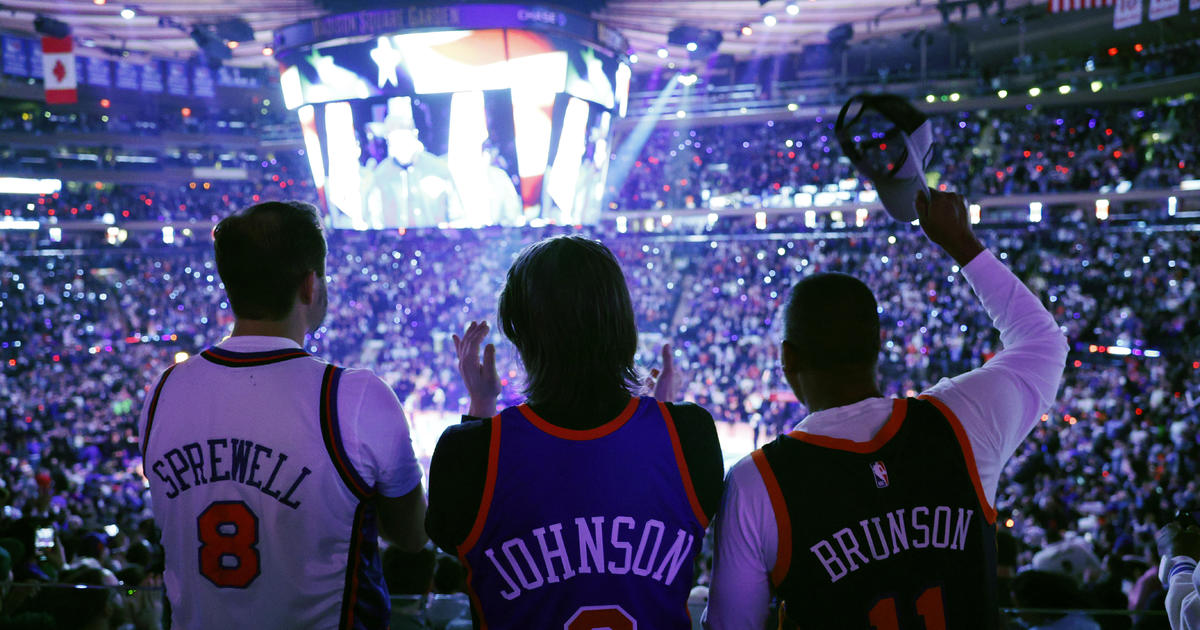COVID 1 Year: The Sports World Stopped, But Hope And Progress Are Beginning To Win The Days
NEW YORK (CBSNewYork) -- The coronavirus pandemic brought on the most significant disruption to the sporting calendar since World War II.
Around the world, games and events were canceled or postponed, forcing teams and organizations to adapt, CBS2's Otis Livingston reported.
On March 11, 2020, the Oklahoma City Thunder-Utah game in Salt Lake City was postponed seconds before tip-off in a surreal scene after Jazz player Rudy Gobert tested positive for COVID-19. The virus suddenly became very real in the sports world.
Less than 24 hours later, college basketball's Big East tournament was cancelled -- at halftime of the St. John's-Creighton game.
The days that followed were full of chaos, fear and confusion as major sporting events were postponed and cancelled, including the NCAA tournament, the first time it wasn't held in the 81-year history of the event.
READ MORE: 2021 NCAA Tournament: How Many Fans Can Attend?
Rutgers had been geared to play in March Madness for the first time in almost three decades.
"Last year ended. It was kind of so abrupt, so there was no ending to that book of last year." Rutgers coach Steve Pikiell said. "I'm trying to get used to coaching with a mask on. That's not easy. I see my players. I don't know if they're smiling, happy, or sad. I can't read their mask."
A YEAR IN THE PANDEMIC: REMEMBRANCE & RESILIENCE
- A Look Back On What's Been Lost And How Tri-State Has Persevered
- Timeline Of Virus' Swift Impact Across The Globe
- Long Island Nurse Who Documented Painful Journey Warns Fight Is Not Over
- Essential Workers Risk Their Own Safety To Keep Supplies And Services Running
- Area School Districts Continue To Make Best Of Tough Situation, Always With Eyes On The Future
- Daughter Looks To Carry On Father's Legacy At Arthur Avenue Restaurant
- Unemployment Forced Many In Our Area To Reinvent Themselves, And Gain Perspective Along The Way
- Food Insecurity Grows Throughout Tri-State Communities, 'The Face Of Hunger Has Changed'
- The Sports World Stopped, But Hope And Progress Are Beginning To Win The Days
- 'Long Haulers' Still On Long Road To Recovery, 'A Complete Lifestyle Change'
- Vaccines Offer Shot Of Hope, Despite Ongoing Distribution Struggles
As Pikiell alluded to, when sports did return, it looked a whole lot different, playing by a whole new set of rules off the field of play, including mask wearing, frequent testing, and of course, playing in front of no fans. It was a huge adjustment for pro athletes used to performing in front of thousands. Instead, fans were replaced by cardboard cutouts.
The professional leagues lost billions of dollars in the process.
They all took different approaches in order to get their sports started or re-started. The NBA and NHL had the most effective solution with the "bubble" -- setups where teams had very limited contact with the outside world.
But outside the bubble, NBA star and New Jersey native Karl-Anthony Towns was impacted as much as anybody, losing his mother, and six other family members before contracting the virus, himself.
"COVID did not treat me well whatsoever, a lot of scary nights," Towns said.
Major League Baseball decided against the bubble during its 60-game regular season, allowing teams to play in their home cities until the postseason.
The NFL held a virtual draft in April and when the season began, some teams played in front of limited fans, but not the Jets and Giants at empty MetLife Stadium. In all, 31 of the league's 32 teams had cases, causing multiple postponements and creating scheduling nightmares.
COVID VACCINE
- New York State book online here or call 1-833-NYS-4-VAX
- New York City book online here or call 877-VAX-4NYC
- Track NYC Vaccinations By Zip Code
- Nassau County more info here
- Suffolk County more info here
- Westchester County more info here
- New Jersey book online here or call 1-855-568-0545
- Connecticut book online here
It was not an easy situation to deal with, especially for a first-time head coach here in New York.
"It was every day. There wasn't a day we weren't reminding each other, hey man, put your mask on. Hey space out. You have your tracer on? It blinks red if you're too close," Giants head coach Joe Judge said.
So here we are, just days after Madison Square Garden allowed 2,000 fans in for the Knicks and 300 people attended a Nets game at Barclays Center.
"It's a different reality for all of us, so it has taken some time to get used to," Nets guard Kyrie Irving said.
New Jersey began allowing fans back into stadiums and arenas on Monday. So when can we hope for mask-less jam-packed crowds again all over the area?
"Look, I wish I could tell you next weekend. The reality right now, that's not the case," Judge said. "But I envision fans in the stands and, hopefully, it's not an empty seat in the house. That's what we're working for. That's what we hope for."
Hope is the magic word.



